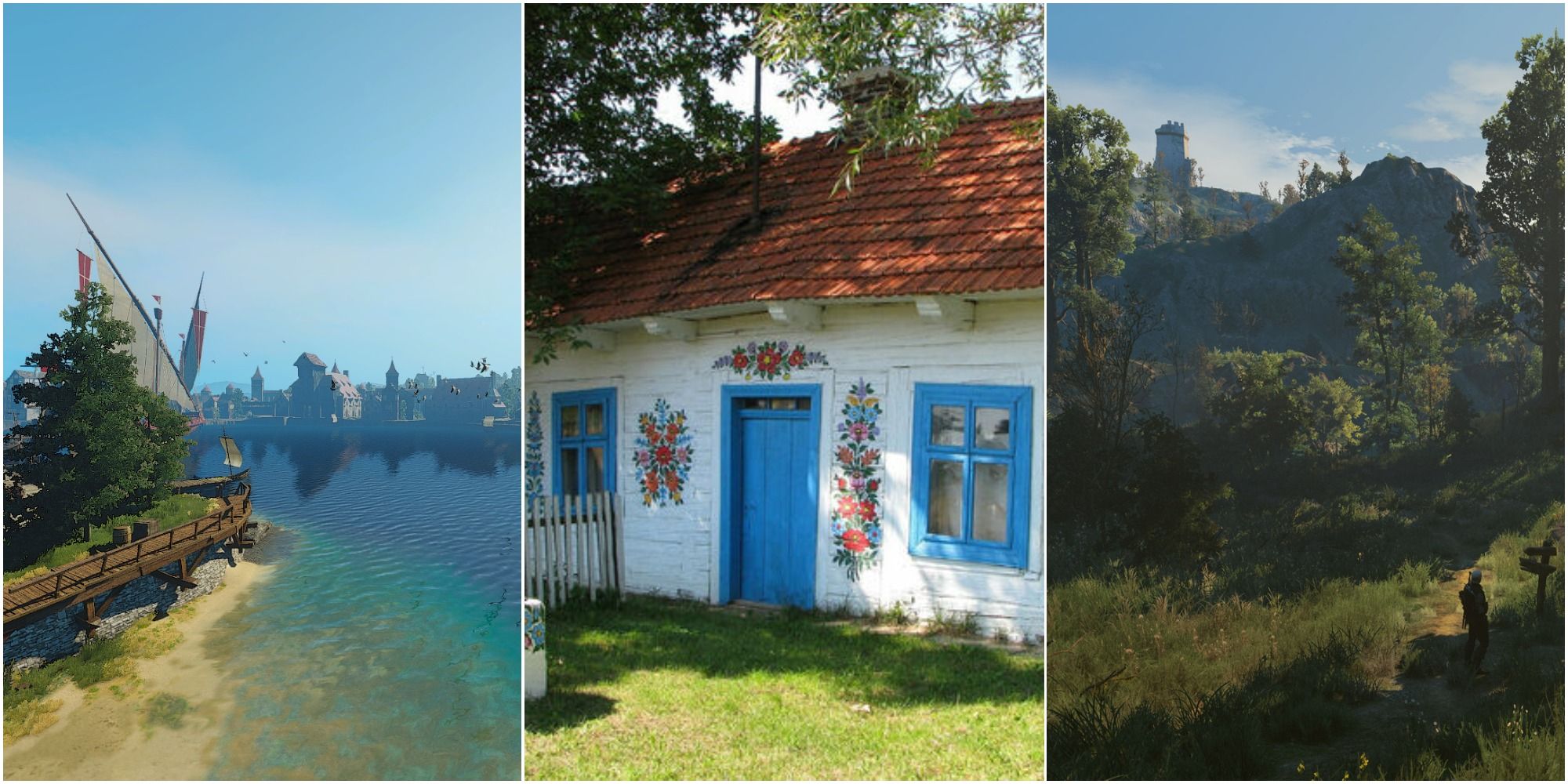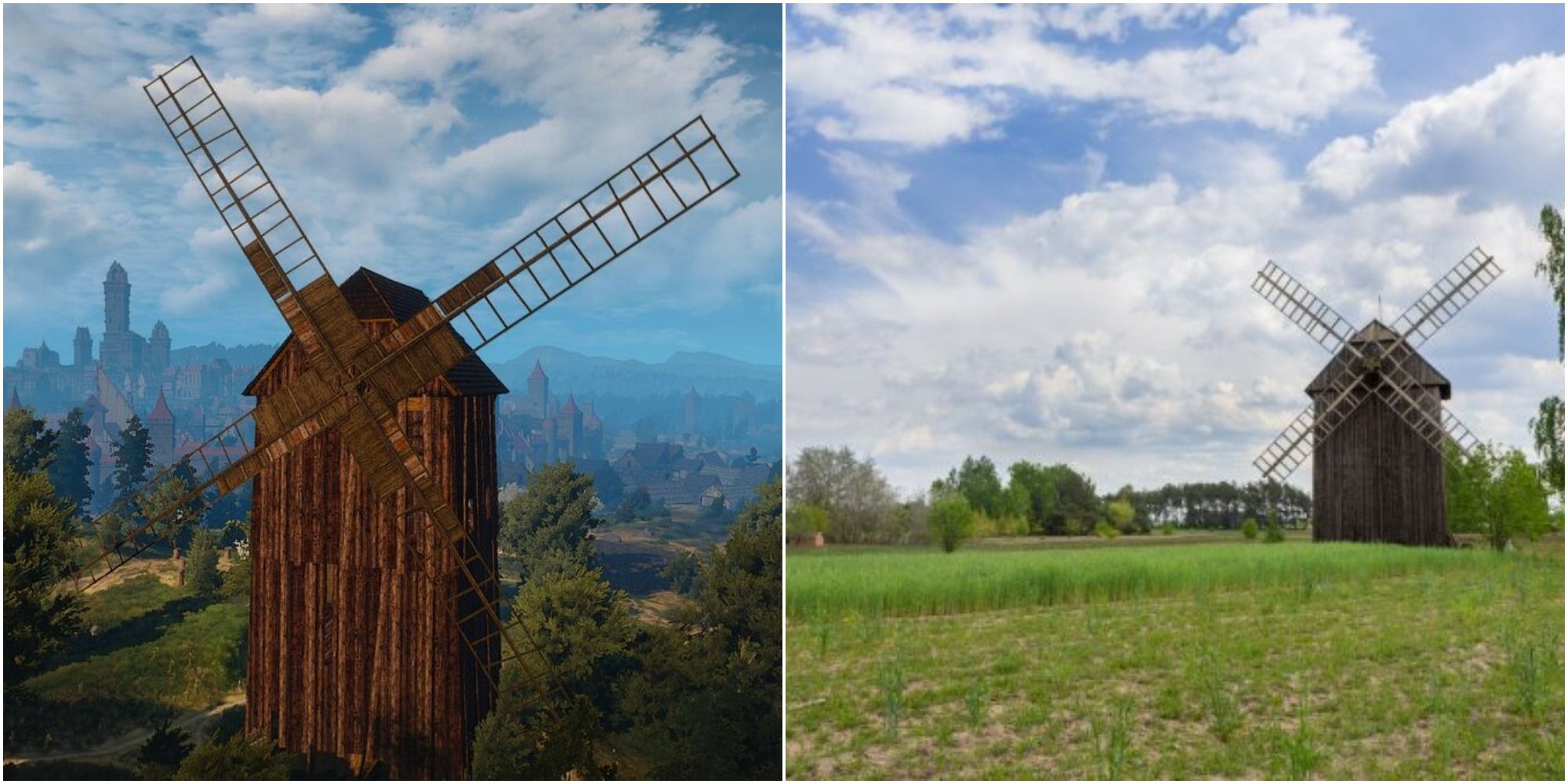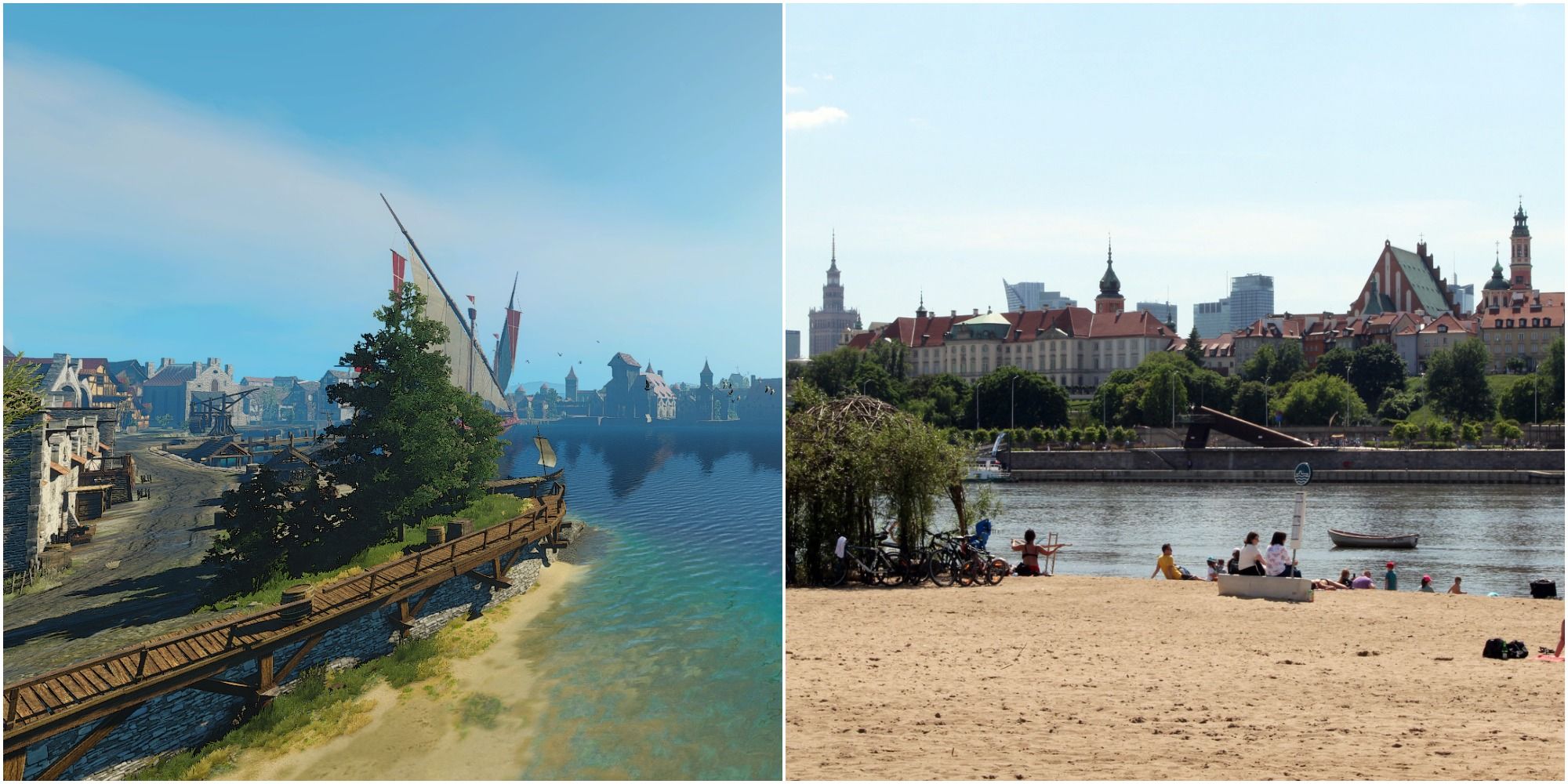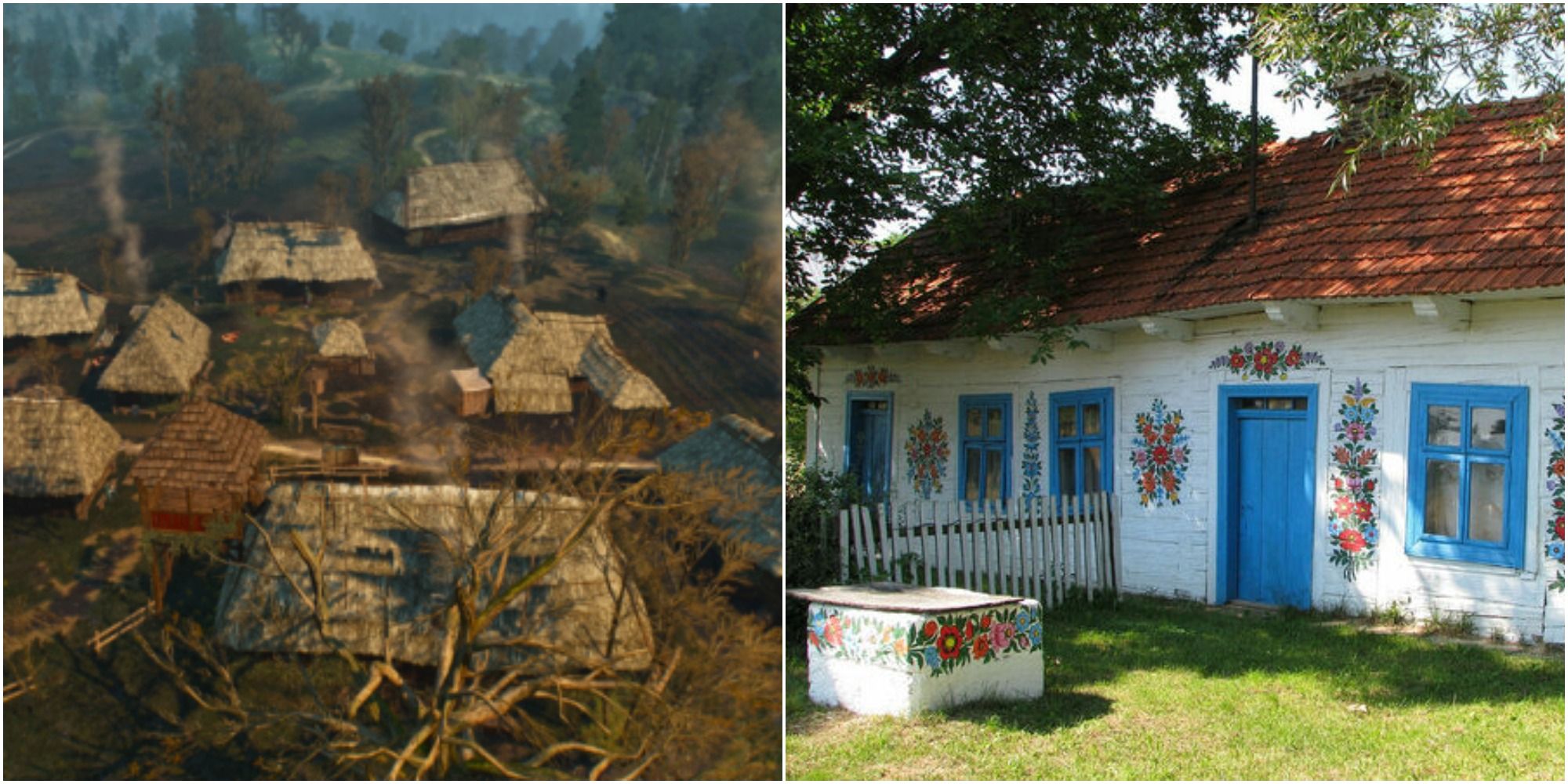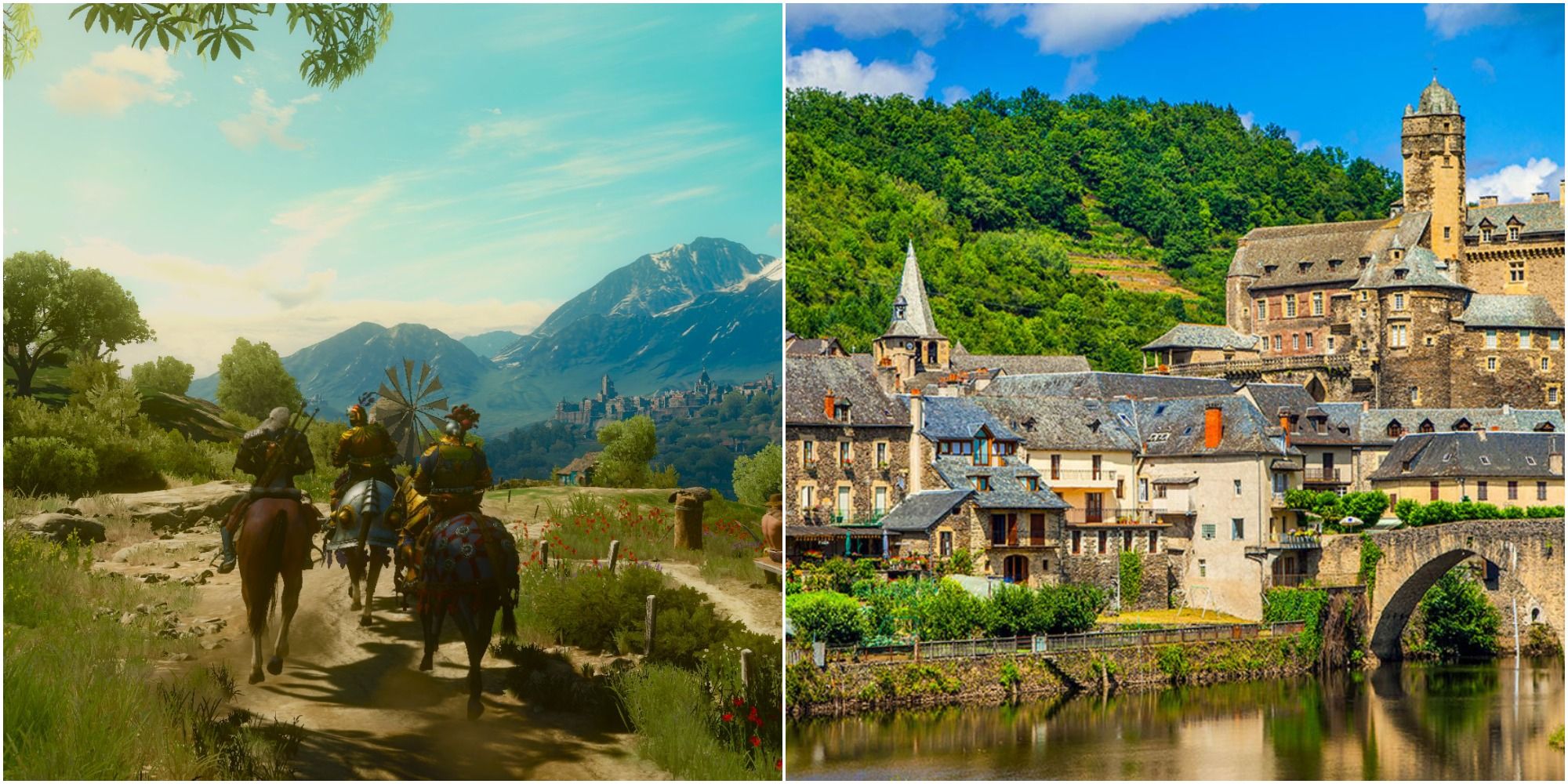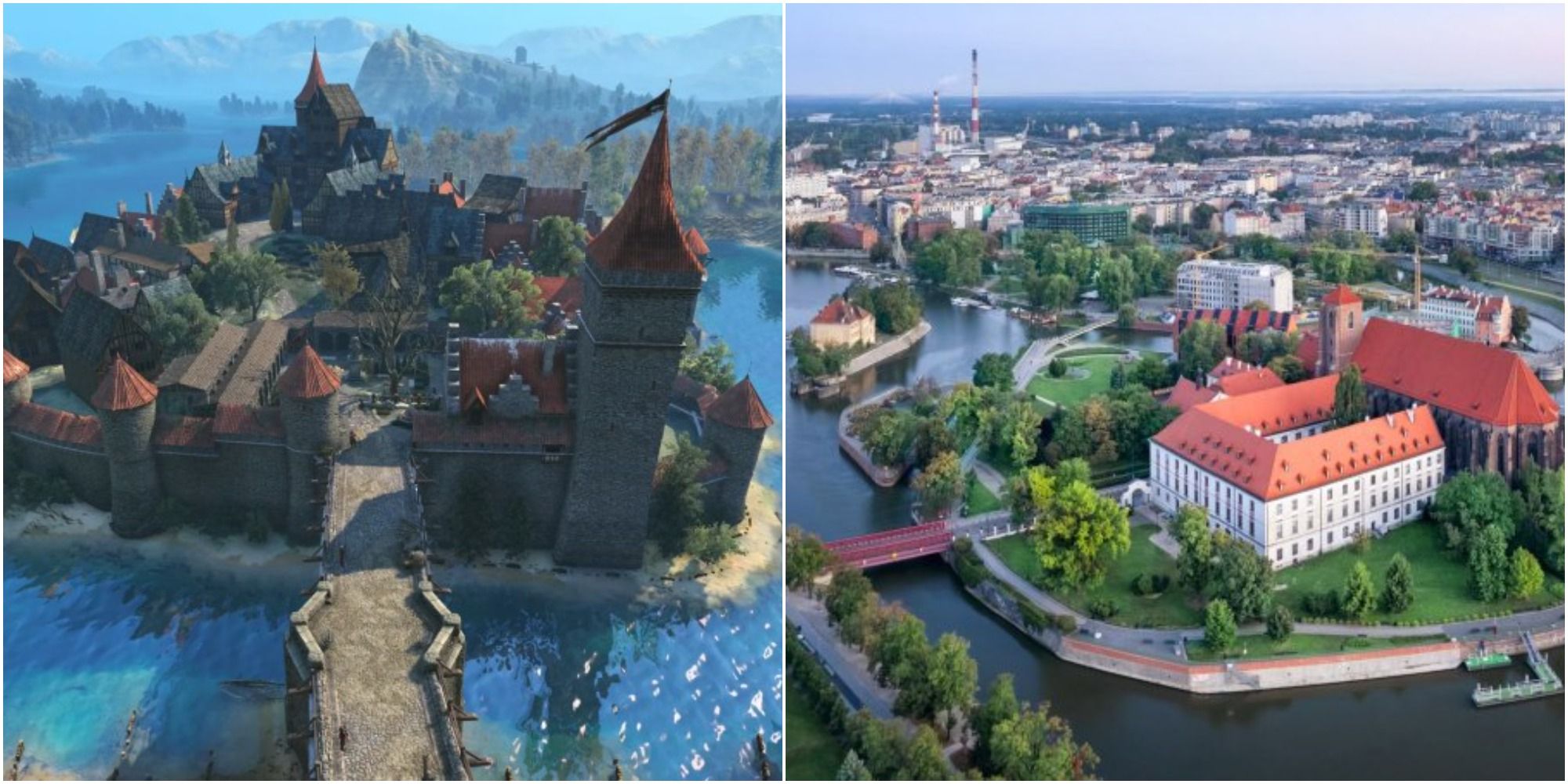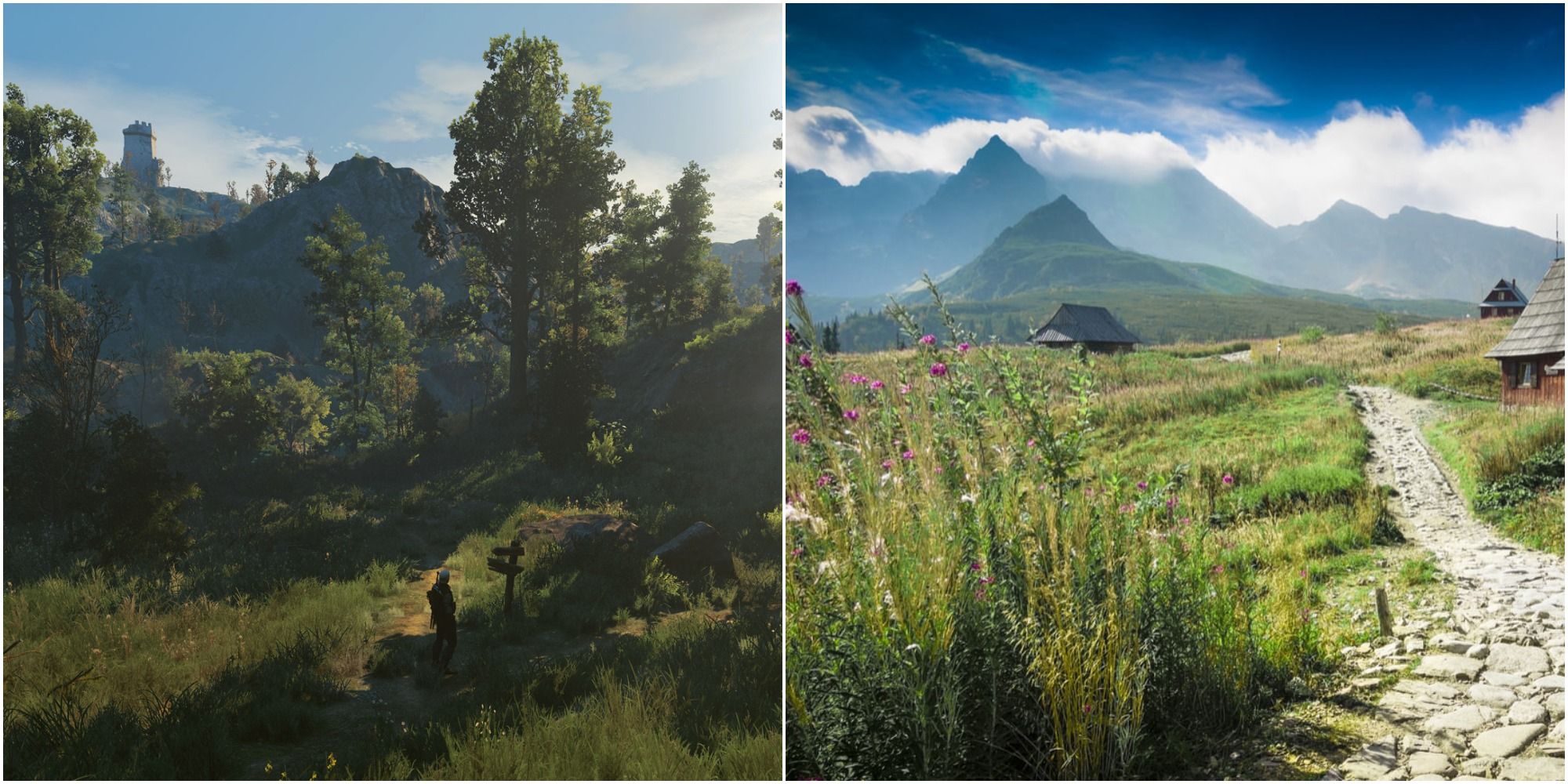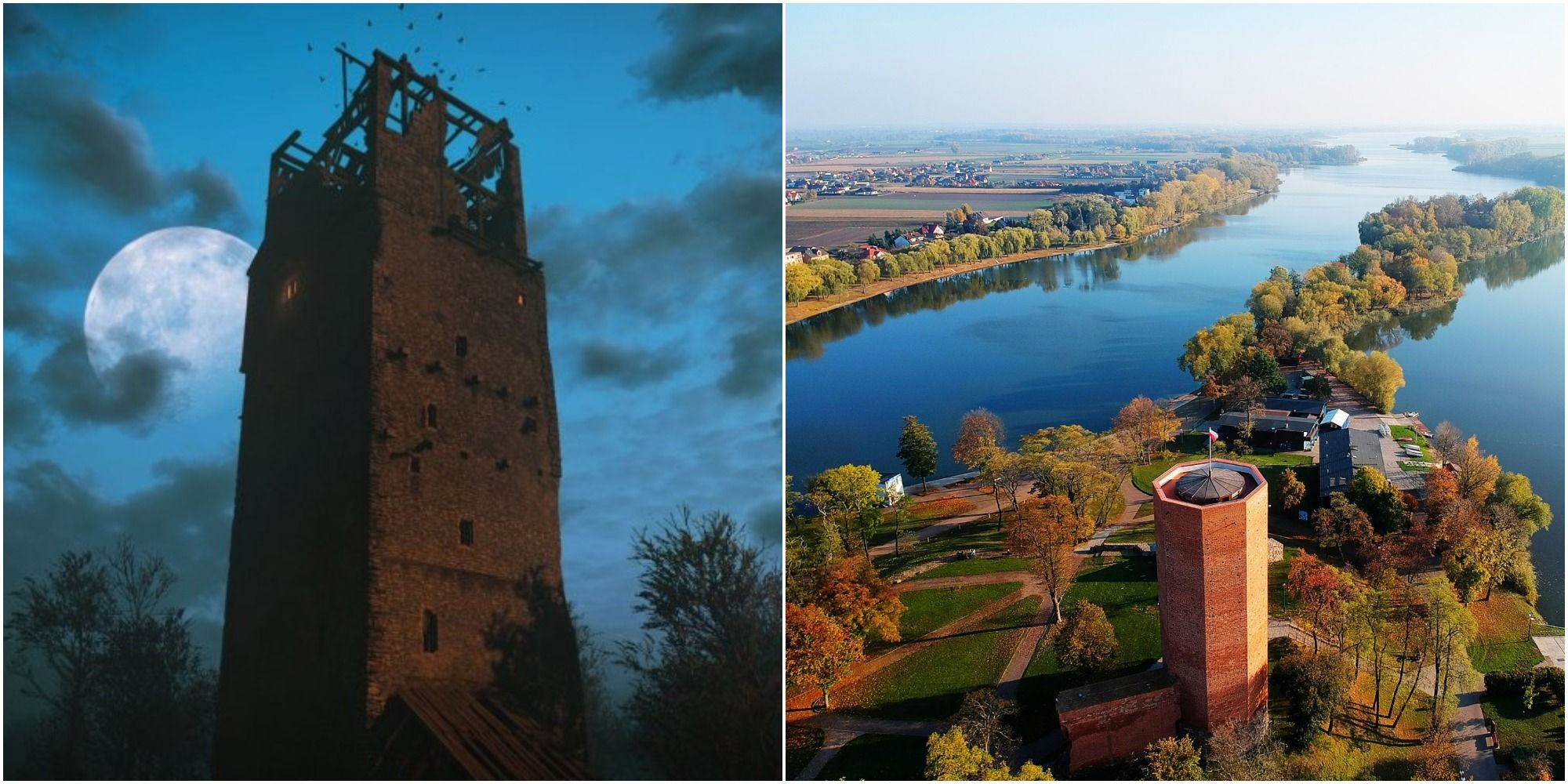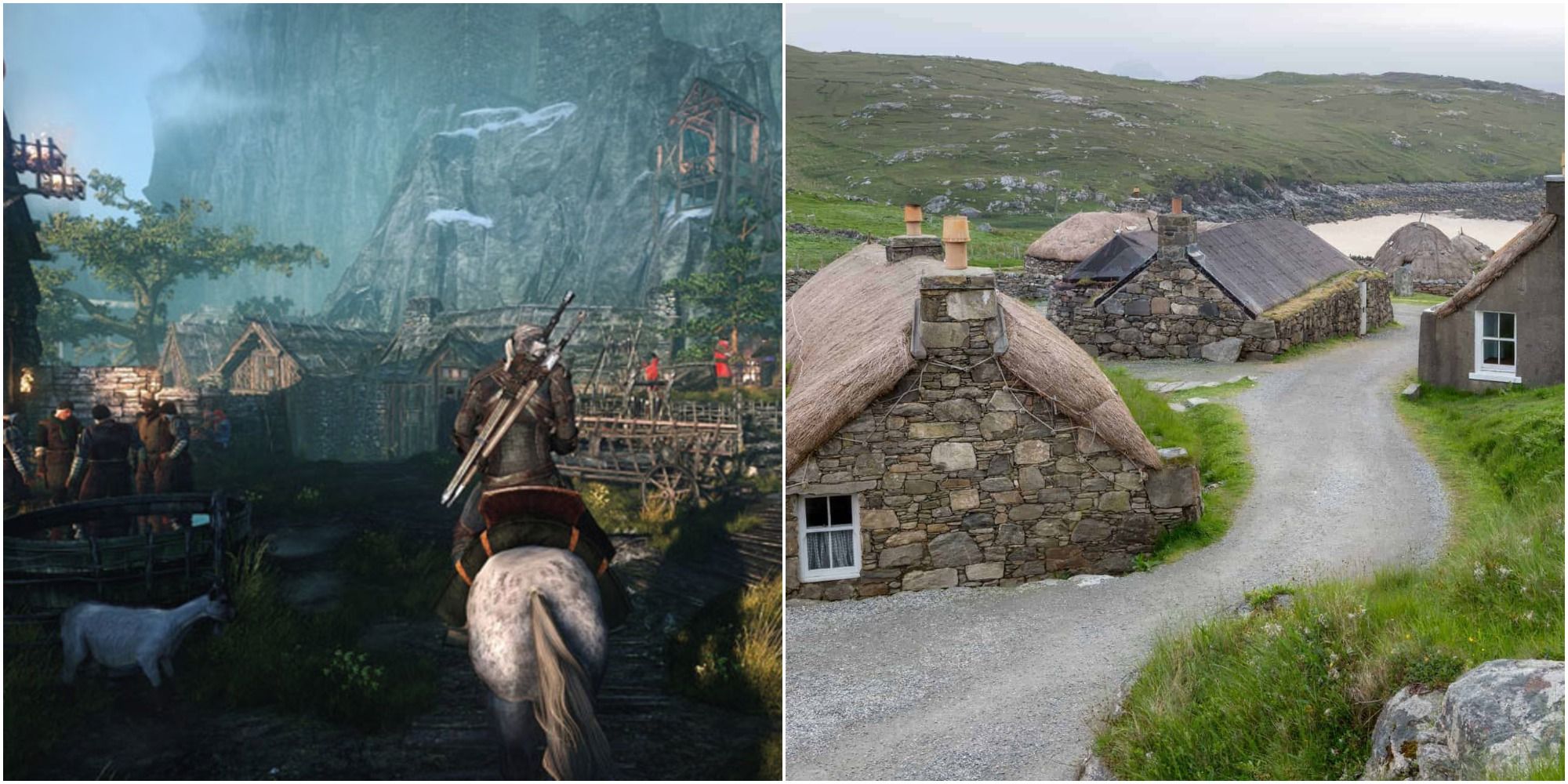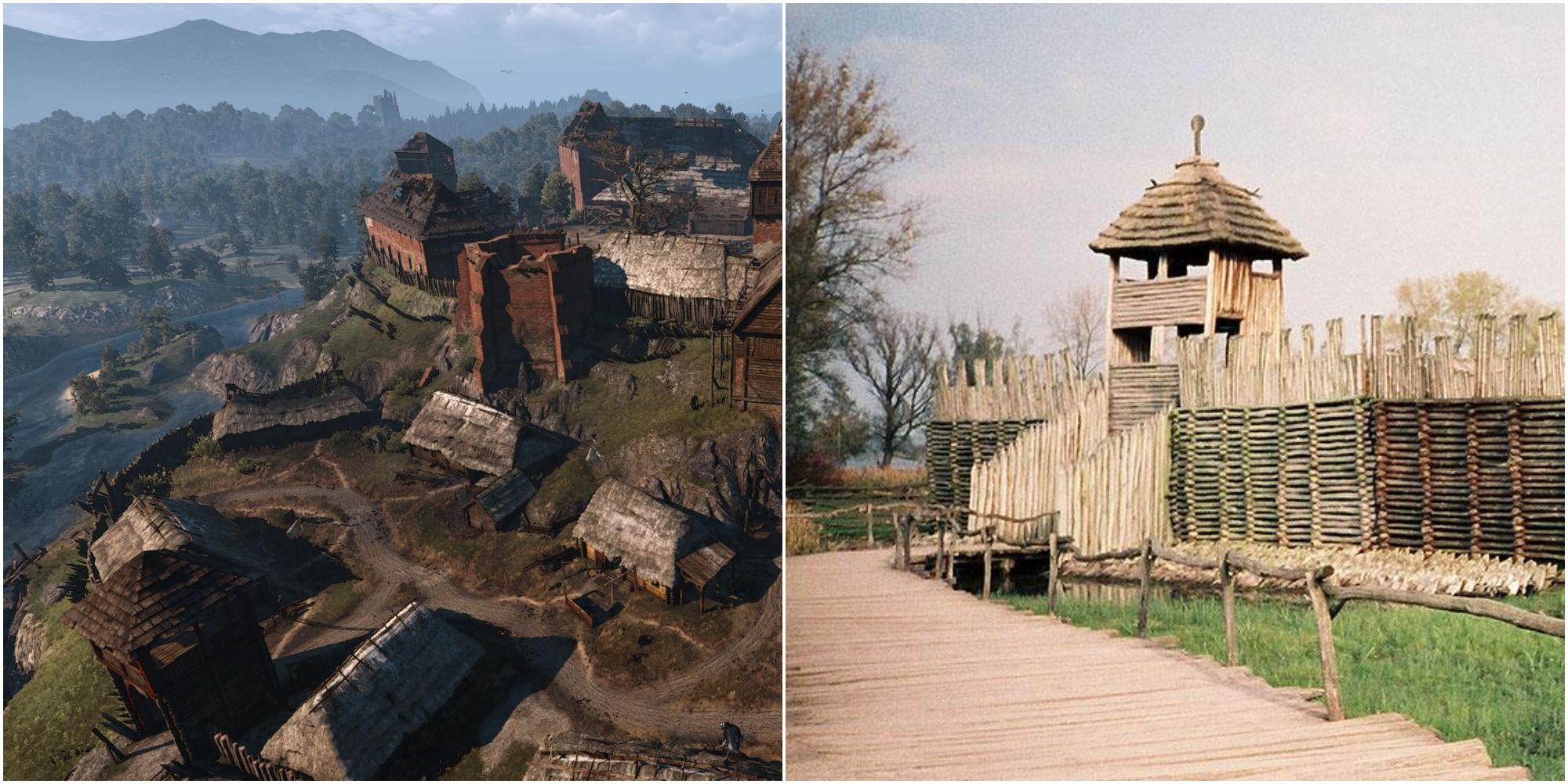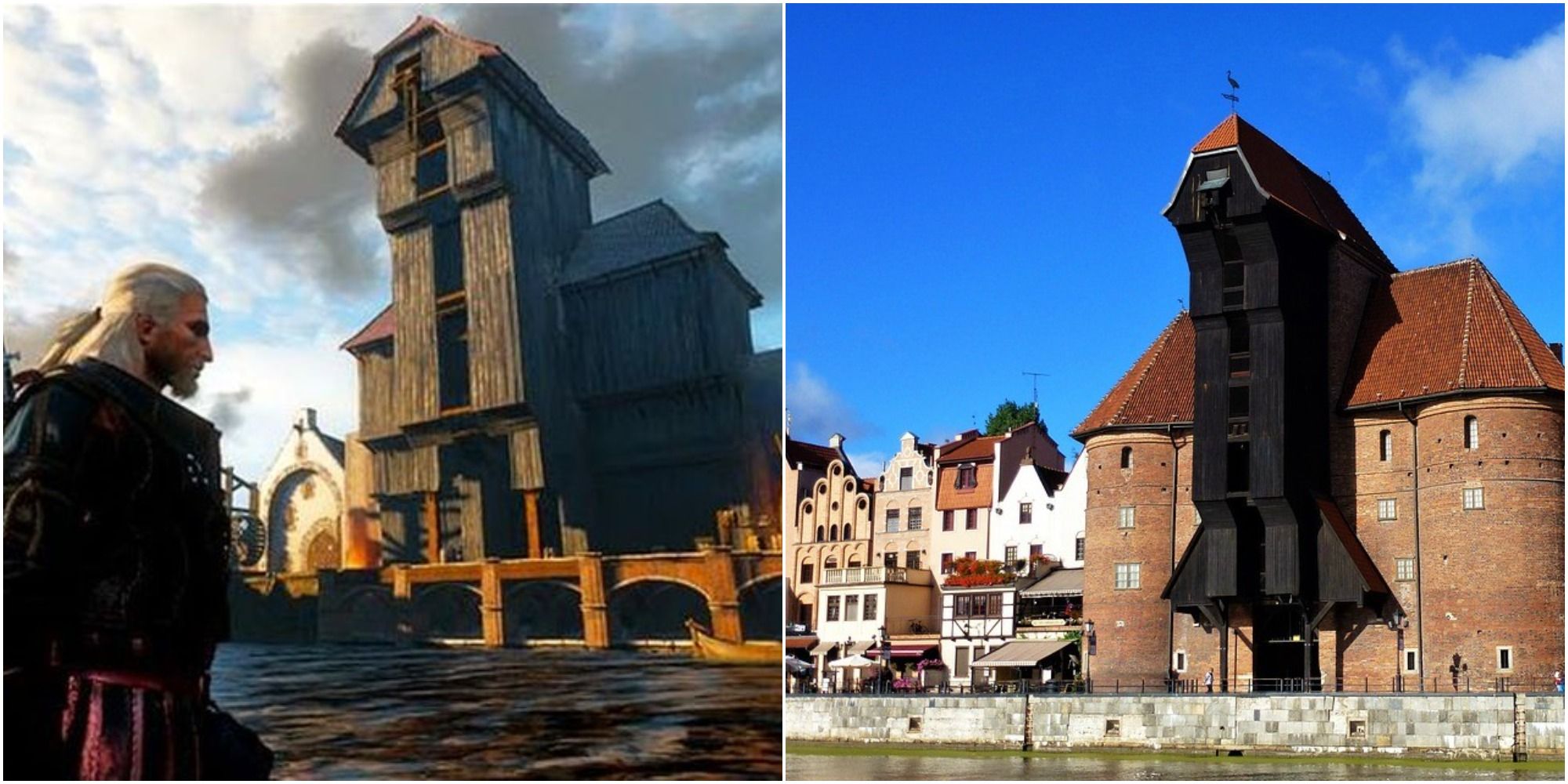There are a great many things to see and do in The Witcher 3, but its world is some of the most stunning. It has a certain beauty that few can match, a wilderness that refuses to quite be tamed and humanity existing despite it all, and a genuine nature therein, swaying and flowing like it has a life of its own.
But of course, such a potently well-realized world can't have sprung out of nowhere, and so it didn't. Instead, many of the locations of the Witcher 3 are inspired by Poland itself and greater areas of Europe as a whole. There's a beautiful cultural heritage woven so lovingly into the game itself.
10 Windmills
Dotted across the landscape of Velen are many, many windmills, monoliths that can be seen far and wide. They're a welcome sight in The Witcher 3, typically denoting settled life nearby and a feeling of place in the world. Perhaps the most memorable of these Lucian's Windmill, a box-shaped windmill just south of Novigrad.
Windmills are a common sight across mainland Europe, most famously perhaps in Holland across its many rolling hills. But a windmill quite like that of Lucian's can be seen in Poland at the Maurzyce Open-Air Museum. It's a box-shaped windmill too, adjacent to a small village like many in-game.
9 The Sandy Beaches
A slightly more general one, but many of the cities of The Witcher 3 are situated on islands or have rivers flowing around them. It makes for a wonderful site, seeing the rivers flowing underneath the cities as you cross over them. It's not entirely unlike moats present in many European castles.
However, it also has a slightly more evident Polish root. In many cities of Poland, cities situated near bodies of water is not uncommon, but a trait many of them share is the same bright sandy beaches surrounding them, such as Warsaw's Praga beach that overlooks the city from the surrounding river.
8 Lindenvale
The village of Lindenvale is a recognizable one, encountered most likely early enough in your journey through Velen. It's a small place, featuring some contracts and even a fist-fighting competition and not much else. Distinctly noticeable however are the many painted floral designs on the homes there.
These designs aren't restricted to just Lindenvale; they are incredibly common in the Polish town of Zalipie. Where this becomes more obvious however is that in the Polish version of the game, Lindenvale is in fact called Zalipie, so the comparison is impossible to deny.
7 Toussaint
Added in The Witcher 3's Blood and Wine expansion, the duchy of Touissaint, the land of wine, is a marvelous location. Far from the heavy, dreary tones of Velen and the abrasive, biting winds of Skellige, Touissaint feels like a land intended to warm you, give you a hug, and invite you to a drink. It's like a fairytale by the game's own admission.
By first impressions, Touissaint would seem heavily based on France. And this is true by all intents! Though it actually holds plenty of other Mediterranean mannerisms. Much of the armor actually comes from Spanish history, like certain wines of Italy are referenced (though perhaps cruelly). The architecture even somewhat blends Gothic France with the bright colors of many Polish cities.
6 Oxenfurt
Placed to the far east of the center of the map, Oxenfurt is a distinct location. Though initially, it has little content until the Hearts of Stone DLC, it still felt like a completed location, with architecture, people, and history to match. It is a town of academics, a place of pretentious notions and superiority, under the rule of Redania.
First assumptions would liken it to the English Oxford, and rightly so. Oxford also has a history of prestigious academics that likely think too highly of themselves. However, the actual architecture of orange tile roofs and meandering walls matches more closely to that of Wawel Castle and Piasek Island of Poland.
5 Velen
More general, but the land of Velen is breathtaking in a mystifying way. Rather than feeling welcoming or diverse throughout, it instead feels natural and oppressive. It feels like the land is a character of itself, and an enemy of the people frequently. It's this exact character that makes it so prevalent and unique.
Though it may seem very wide-reaching to say so, it is akin to much of the landscape of Poland, condensed into a much smaller region, of course. The windy forests, the sandy beaches, the small villages and windmills, the culture that permeates the whole place. There's a clear love put into it, weaved in such a way as to blend real belief with that of the world itself.
4 Fyke Isle
A distinct quest early enough in the game is that of A Towerful Of Mice given to you by Keira Metz. She tasks you with traveling out to the equally creepy and enthralling Fyke Isle, an abandoned island home seemingly only to ghosts, a tall, solemn tower, and many, many mice.
Interestingly, the location and especially so the quest within are heavily inspired by a Polish folktale. The Mysia Wieża (roughly Mouse Tower) in Kruszwica. So the legend goes, a Polish Prince fled to the tower with his family after angry mobs amassed, though much of his family ended up being devoured by mice, himself and his wife included at the end. Hence why the quest is named A Towerful of Mice
3 Skellige
Skellige as a whole might seem rather broad to include as a whole location, though it is also the location with the most minimally obvious Polish influence. Many people might assume the location is primarily based on Scandinavia and many old Viking tales and legends, though this is only half-right.
In fact, Skellige takes heavy inspiration from Celtic cultures. For one, Skellige is very directly named after the Skellig Isles of Ireland. On top of that, all of the clan names are in Irish such as Clan Tuirseach (basically meaning exhausted) or the isle of Ard Skellig (Ard meaning high or tall). Most heavily though would be the sub-culture of Norse Gael that settled heavily in the Hebrides of Scotland.
2 Crow's Perch
One of the most distinctive locations in the game, not just for its appearance but for its complex characters and deep, emotional questline is Crow's Perch. It's one of the few semi-autonomous towns left, the Baron ruling through allegiance to Nilfgaard. His questline is emotional, much of it centred around his home of Crow's Perch.
In truth, there are many locations that could have inspired Crow's Perch, as there are many quickly-made forts of the like, though one that stands out as somewhat similar is that of Biskupin, Poland. It is an iron age fort, though holds a similar moat and is in an untamed section of wilderness. General, but the similarities can be drawn.
1 Novigrad
Novigrad is a distinct location in-game, most easily described as the game's central hub in Velen. It is a free city (for most of the game, anyway). It has a very distinct division of districts, from workplaces to rich upper-class and shoddy alleys for the poor and everything in between. It feels like a living city, and with good reason.
The name itself most likely derives from the Russian city of Новгород (Novgorod), which also had a roughly 300 year period of declaring itself an independent city. However, it also likely takes heavy inspiration from the Polish city of Gdánsk, another city that declared itself free. Distinct here as well is the very similar coat of arms, sharing colors and much iconography, as well as the distinctive crane that exists in Novigrad's docks, almost identical to the one in present-day Gdánsk.

